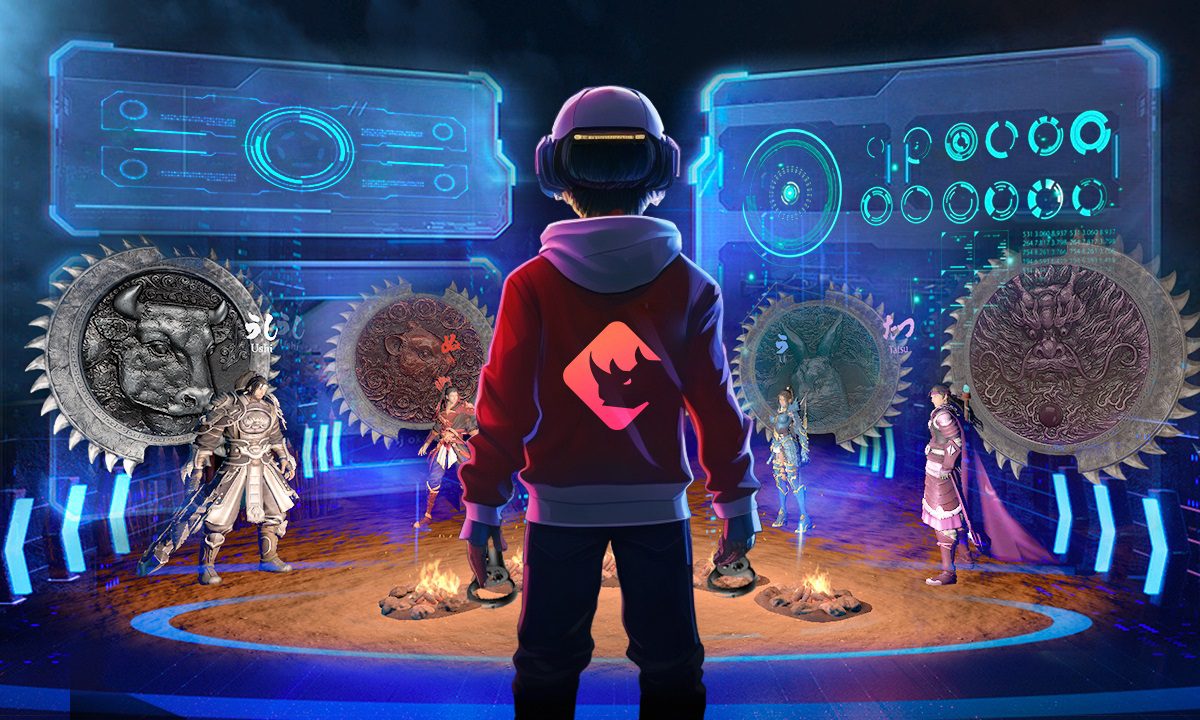How Unreal Engine is Transforming Game Development Industry

Unreal Engine has emerged as a game-changer in the world of game development, revolutionizing the industry and transforming the way games are created. Developed by Epic Games, Unreal Engine is a powerful and versatile game engine that offers a wide range of tools, features, and capabilities. With its intuitive interface and cutting-edge technology, Unreal Engine has become the go-to choice for both indie developers and major studios alike.
This article explores the impact of Unreal Engine on the game development industry, delves into its key features and advantages, showcases real-world success stories, examines its future potential, and addresses the challenges and limitations faced by developers. Join us as we uncover how Unreal Engine has reshaped the landscape of game development and become an industry standard.
What is Unreal Engine?
In simpler terms, Unreal Engine is a powerful software tool used to create amazing real-time 3D experiences, primarily focusing on video games. Imagine it as a digital toolbox overflowing with brushes, paints, sculpting tools, and even complex machines, all designed to let you build interactive worlds and stories.
Unreal Engine’s Key Roles:
- Graphical Vanguard: Unreal Engine democratized high-fidelity visuals, pioneering groundbreaking technologies like Nanite and Lumen, which deliver photorealistic rendering previously relegated to high-budget studios. This democratization fueled a new era of visual storytelling, immersing players in worlds indistinguishable from reality.
- Empowering Creators: Unreal Engine’s commitment to accessibility, with its intuitive Blueprint system and extensive documentation, has empowered a previously untapped wellspring of creative talent. This, in turn, fostered a diverse and vibrant indie scene, enriching the industry with unique games and innovative gameplay mechanics.
- Shaping the Future of Gaming: Unreal Engine is at the forefront of emerging technologies like VR/AR and AI, enabling developers to experiment with interactive narratives and dynamic game worlds. Its constant evolution paves the way for entirely new ways of experiencing and interacting with games, ensuring its continuous impact on the future of the industry.
Read also: How AI is Propulsive the Gaming Industry into a New Epoch
Unreal Engine: Historical Overview
Unreal Engine’s journey is a testament to the incredible power of innovation and evolution. Let’s embark on a historical tour through its significant milestones, exploring how it transformed from a niche game engine to a behemoth shaping real-time 3D creation across industries.
-
1995-1998: The Genesis – Seeds of a Revolution are Sown
The story begins with Tim Sweeney, founder of Epic Games, crafting editing tools for his shareware titles. Fueled by ambition and a vision for groundbreaking visuals, Sweeney embarks on the ambitious project that would become Unreal Engine in 1995. Initially developed for internal use, the engine showcased its potential in the first-person shooter “Unreal” in 1998. The game’s stunning graphics, advanced physics, and innovative level editor captivate audiences and developers alike, establishing Unreal Engine as a force to be reckoned with.
-
2002-2014: Building Momentum – Growth, Adoption, and Recognition
The second iteration, Unreal Engine 2, arrives in 2002, powering titles like “America’s Army” and “Unreal Tournament 2004.” It introduces new features like dynamic lighting and improved physics, solidifying Unreal Engine’s position as a leading game engine. Its versatility is further demonstrated by its adoption in non-game domains like architecture and film visualization. In 2009, Unreal Engine 3 takes another giant leap with advanced shaders, real-time shadows, and improved scalability, propelling it to the forefront of AAA game development. Titles like “Gears of War,” “Mass Effect,” and “Bioshock” become testaments to its power and flexibility.
-
2014-Present: A New Era Dawns – Democratization, Innovation, and Endless Possibilities
Unreal Engine 4 marks a turning point in 2014, focusing on accessibility and ease of use. Blueprint visual scripting empowers artists and non-programmers to contribute to game development, democratizing the creative process. The engine continues to evolve with features like physically based rendering, particle systems, and advanced audio tools, fueling the creation of breathtaking games like “Fortnite,” “Hellblade: Senua’s Sacrifice,” and “The Witcher 3: Wild Hunt.”
-
2022-Beyond: Unreal Engine 5 and the Horizons Unveiled
The latest iteration, Unreal Engine 5, arrives in 2022, pushing the boundaries of graphical fidelity with features like Nanite, Lumen, and World Partition. These groundbreaking technologies enable near-cinematic visuals, dynamic lighting, and expansive open worlds, setting a new standard for real-time 3D. Beyond games, Unreal Engine 5 empowers creators in architecture, film, education, and the Metaverse, shaping the future of interactive experiences across industries.
Unreal Engine’s historical journey is far from over, and its impact is undeniable. It has democratized game development, pushed the boundaries of technology, and opened doors to countless possibilities in diverse fields. With its relentless pursuit of innovation and a thriving community, Unreal Engine continues to paint the future of real-time 3D creation in vibrant, ever-evolving strokes.
Unreal Engine: A Titan of Popularity and Recognition
Unreal Engine’s popularity and recognition aren’t merely whispers in the tech world; they’re resounding roars echoing across multiple industries. Here’s a peek into its reign of acclaim:
Numbers Speak Volumes:
- Market Share: Unreal Engine consistently dominates the market share of game engines, boasting over 30% in 2023. This means you’re likely experiencing its magic in more games than you realize!
- Game Portfolio: From indie darlings like “Cuphead” and “Hellblade: Senua’s Sacrifice” to AAA heavyweights like “Fortnite,” “The Witcher 3: Wild Hunt,” and “Cyberpunk 2077,” Unreal Engine powers a diverse and critically acclaimed selection of games.
- Industry Adoption: Its reach extends beyond games, finding favor in the realms of architecture, film, automotive design, and even education. With its versatility and powerful tools, it’s rapidly becoming the go-to engine for various real-time 3D experiences.
Beyond Numbers – Recognition and Praise:
- Awards and Accolades: Unreal Engine has amassed a veritable treasure trove of awards, including multiple Game Developers Choice Awards for “Best Engine” and “Technical Achievement.” Industry veterans and critics constantly sing its praises, highlighting its innovation and user-friendliness.
- Community Buzz: Its vibrant community of developers, artists, and designers is a testament to its popularity. Unreal Engine forums and social media channels buzz with activity, fostering collaboration and pushing the boundaries of what’s possible with the engine.
- Media Attention: Leading tech publications like The Verge, Wired, and Engadget frequently feature Unreal Engine’s advancements and its impact on various industries. This constant buzz keeps it at the forefront of technological advancement and public awareness.
Reasons for Unmatched Popularity:
- Accessibility: Blueprint visual scripting and user-friendly tools make it approachable for aspiring developers and artists, democratizing the real-time 3D creation process.
- Cutting-Edge Technology: Features like Nanite, Lumen, and World Partition in Unreal Engine 5 set new standards for graphical fidelity, lighting, and open-world experiences.
- Versatility: Its ability to adapt to diverse needs in gaming, film, architecture, and other fields makes it a one-stop shop for creatives across industries.
- Thriving Community: The supportive and collaborative Unreal Engine community fosters innovation, sharing knowledge, and pushing the boundaries of the engine’s capabilities.
Unreal Engine’s popularity and recognition are more than just statistics; they’re a reflection of its transformative impact on the world of real-time 3D creation. Its accessibility, cutting-edge technology, versatility, and thriving community have propelled it to the top, and its future seems ever brighter as it continues to revolutionize and redefine the possibilities in countless fields.
The Impact of Unreal Engine on Game Development
Revolutionizing the Industry
Unreal Engine has revolutionized the game development industry by providing developers with a comprehensive and accessible platform to create high-quality games. It has democratized game development by breaking down barriers and empowering individuals and small teams to bring their creative visions to life without the need for extensive resources.
Accessibility and Democratization
One of the key strengths of Unreal Engine is its accessibility. It provides a user-friendly interface and a visual scripting system called Blueprint, which allows developers to create gameplay mechanics without the need for extensive coding knowledge. This democratizes the development process, making it more inclusive and allowing a wider range of creators to enter the industry.
Redefining Graphics and Visuals
Unreal Engine has been at the forefront of redefining graphics and visuals in gaming. Its advanced rendering capabilities and realistic lighting systems enable developers to create breathtakingly lifelike environments. From highly detailed characters to stunning landscapes, Unreal Engine has set new standards for visual fidelity and immersion.
Key Features and Capabilities of the Unreal Engine
Real-time Rendering
Unreal Engine’s real-time rendering capabilities allow developers to see their changes instantly, making the development process more efficient and iterative. This feature enables real-time previews of gameplay, lighting, and effects, giving developers the ability to make adjustments on the fly and achieve the desired results quickly.
Blueprint Visual Scripting
Blueprint is Unreal Engine’s visual scripting system that simplifies the creation of gameplay mechanics and interactions. It allows developers to create complex systems and behaviors by connecting pre-built nodes in a visually intuitive way. This makes it easier for non-programmers to prototype and implement gameplay ideas without having to rely heavily on coding.
Powerful Physics Simulation
Unreal Engine comes equipped with a powerful physics simulation system that accurately models real-world physics. This feature enables developers to create realistic interactions between objects, characters, and environments, adding a layer of authenticity to the game experience. From realistic collisions to dynamic destruction, the physics simulation in Unreal Engine enhances gameplay immersion.
Extensive Asset Library
Unreal Engine offers an extensive asset library that includes a wide range of pre-built assets, such as characters, environments, and sound effects. These assets can be used as a starting point or as inspiration for developers, saving them time and effort in creating everything from scratch. The asset library also encourages collaboration and sharing within the Unreal Engine community.
A few more of its key features are listed below:
- Stunning Visuals: Unreal Engine boasts cutting-edge rendering technology that brings environments and characters to life with incredible detail and realism. Imagine lush forests with leaves swaying in the wind, sunbeams sparkling on a lake, or characters with skin textures that react to light and sweat.
- Accessible Development: The engine offers a user-friendly interface and visual scripting systems, making it easier for aspiring developers to create games without needing to write tons of code. Think of it like building with Lego blocks, where each function and element becomes a visual drag-and-drop component.
- Versatility beyond Games: While it shines in game development, Unreal Engine’s power extends to other realms like architecture, film, and even education. Imagine architects constructing virtual models of buildings before they’re built, film directors crafting immersive digital sets, or medical students performing virtual surgeries before entering an operating room.
- Thriving Community: A vibrant community of developers and artists support and push the engine’s boundaries. This means you have access to countless resources, tutorials, and even pre-made assets to speed up your creative process. Think of it like having a global team of talented collaborators always at your fingertips.
- Constant Evolution: Epic Games, the developers behind Unreal Engine, actively updates and improves it, adding new features and pushing the boundaries of technology. This ensures you’re always working with the latest and greatest tools available.
In short, Unreal Engine is a game-changer, empowering creators to build captivating experiences that blur the lines between reality and imagination. It’s more than just a game engine; it’s a platform for unleashing creativity and shaping the future of interactive entertainment.
Advantages of Using Unreal Engine in Game Development
Cross-platform Compatibility
One of the biggest advantages of Unreal Engine is its cross-platform compatibility. It allows developers to build games for multiple platforms, including PC, consoles, and mobile devices, without the need for extensive rework or optimization. This versatility enables developers to reach a wider audience and maximize the potential reach of their games.
Robust and Flexible Tools
Unreal Engine provides developers with a robust set of tools that empower them to create games with intricate mechanics, stunning visuals, and immersive experiences. From advanced blueprint scripting to complex animation systems, Unreal Engine offers a wide array of features that cater to the unique needs of game developers. Its flexibility allows developers to customize and tailor the engine to suit their specific requirements.
Community and Support
Unreal Engine boasts a vibrant and supportive community of developers who actively share their knowledge, resources, and insights. This sense of community fosters collaboration provides valuable learning opportunities, and ensures that developers have access to the support they need. Whether it’s through forums, tutorials, or official documentation, Unreal Engine’s community and support network are invaluable assets for aspiring and experienced game developers alike.
Success Stories of Unreal Engine in Game Development
Unreal Engine’s impact on game development can be best understood through the diverse triumphs it has fueled. Let’s dive into some captivating case studies showcasing its versatility and ability to empower studios of all sizes to achieve remarkable feats:
AAA Powerhouse: “Fortnite” – Epic Games:
Unreal Engine reigns supreme in the AAA realm, with “Fortnite” standing as a shining example. Its seamless blend of cartoony aesthetics, dynamic open-world gameplay, and ever-evolving content updates have captivated millions. Unreal Engine’s robust features like networking, physics simulation, and real-time world editing empower Epic Games to constantly iterate and deliver a consistently engaging experience.
Indie Darling: “Hellblade: Senua’s Sacrifice” – Ninja Theory:
Unreal Engine isn’t limited to mega-productions. Its accessibility and powerful tools enabled Ninja Theory, a smaller studio, to craft the critically acclaimed “Hellblade: Senua’s Sacrifice.” The game’s stunning visuals, immersive sound design, and exploration of mental health resonated deeply with players. Unreal Engine’s flexibility allowed Ninja Theory to tailor the engine to their specific artistic vision, resulting in a unique and impactful experience.
Visual Spectacle: “The Witcher 3: Wild Hunt” – CD Projekt Red:
Few games showcase the graphical prowess of Unreal Engine as breathtakingly as “The Witcher 3: Wild Hunt.” Its vast open world, detailed environments, and intricate character models immerse players in a truly believable world. The engine’s lighting, particle effects, and weather systems further enhance the atmospheric beauty, solidifying “The Witcher 3” as a graphical benchmark for years to come.
Genre Innovation: “Cuphead” – StudioMDHR:
Unreal Engine’s versatility extends beyond hyper-realistic visuals. StudioMDHR’s charming run-and-gun title, “Cuphead,” proves that retro aesthetics can shine within its capabilities. The hand-drawn animation style, inspired by 1930s cartoons, seamlessly blends with Unreal Engine’s physics and gameplay systems, resulting in a unique and captivating experience that redefines the genre.
Global Phenomenon: “Pokémon Go” – Niantic and Nintendo:
Unreal Engine’s reach surpasses traditional console and PC gaming. Niantic’s augmented reality mobile game, “Pokémon Go,” leveraged the engine’s capabilities to overlay Pokémon onto the real world, sparking a global phenomenon. Unreal Engine’s real-time rendering and location-based technology enabled millions to embark on their own Pokémon adventures, blurring the lines between the virtual and physical world.
These are just a few examples of the diverse landscape of success stories powered by Unreal Engine. Each case study highlights a different facet of the engine’s strengths, showcasing its ability to cater to various artistic visions, technical demands, and audience preferences.
Unreal Engine: Powering the Future of Game Development
Unreal Engine has established itself as a powerhouse in the game development world, renowned for its stunning visuals, cutting-edge features, and accessible tools. But its impact extends beyond creating graphically impressive titles; Unreal Engine is actively shaping the future of game development itself.
Revolutionizing Graphics
One of Unreal Engine’s defining strengths lies in its graphical prowess. Unreal Engine 5 introduced groundbreaking technologies like Nanite and Lumen, which render incredibly detailed environments and dynamic lighting in real-time. These advancements push the boundaries of visual fidelity, creating games that feel almost indistinguishable from reality.
Democratizing Development
Unreal Engine isn’t just for AAA studios anymore. Its accessible features like Blueprint visual scripting allow developers of all skill levels to bring their ideas to life. This democratization of game development opens doors for independent creators and fosters a more diverse and innovative gaming landscape.
Embracing the Future
Unreal Engine isn’t content with resting on its laurels. It actively embraces emerging technologies like virtual reality, augmented reality, and the metaverse. Its VR Editor allows developers to create immersive VR experiences with ease, while its support for platforms like the Epic Games Store and Unreal Engine Marketplace fosters collaboration and community growth.
Unreal Engine’s impact on the future of game development can be summarized through these key points:
- Photorealistic visuals: Unreal Engine 5’s Nanite and Lumen technologies push the boundaries of graphical fidelity, creating games that look more real than ever before.
- Accessibility for all: Blueprint visual scripting and other user-friendly tools make game development accessible to a wider range of creators, fostering a more diverse and innovative gaming landscape.
- Embracing new technologies: Unreal Engine’s support for VR, AR, and the metaverse positions it at the forefront of the future of gaming.
- Community and collaboration: The Epic Games Store and Unreal Engine Marketplace facilitate collaboration and knowledge sharing within the game development community.
Overall, Unreal Engine is not just a game engine; it’s a platform that empowers developers to bring their wildest gaming visions to life. As it continues to evolve and embrace new technologies, Unreal Engine is poised to shape the future of game development for years to come.
Challenges and Limitations of Unreal Engine in Game Development Industry
Unreal Engine, with its jaw-dropping visuals and versatile toolkit, tempts developers with the promise of crafting dream games. Yet, while it empowers ambitious creations, Unreal Engine’s path isn’t paved solely with pixelated gold. Here, we delve deeper into the engine’s challenges and explore potential workarounds to keep your development journey smooth.
The Steep Slope of Complexity:
Unreal Engine’s feature-rich landscape can be overwhelming, especially for newcomers. The vast array of tools, intricate documentation, and C++ coding demands can feel like scaling Mount Codemore without a Sherpa.
- Workaround: Embrace the gradual climb. Start with beginner-friendly tutorials and projects, focusing on mastering core concepts before venturing into advanced functionalities. Utilize the Unreal Engine community and online resources for guidance and support. Consider enrolling in online courses or attending workshops to level up your skills.
Performance Peril: Balancing Beauty and Framerates:
Unreal Engine’s graphical prowess comes at a cost – hefty resource consumption. Striking a balance between stunning visuals and smooth performance can be a delicate dance.
- Workaround: Optimize ruthlessly! Regularly assess your scene complexity, texture resolutions, and lighting effects. Utilize profiling tools to identify bottlenecks and implement optimization techniques like level-of-detail adjustments and occlusion culling. Consider downgrading specific graphical aspects if necessary, prioritizing a consistent framerate over every pixel of perfection.
Mobile Maze: Taming the Beast for Smaller Screens:
While Unreal Engine supports mobile development, the journey can be riddled with platform-specific hurdles. Large package sizes, battery drain concerns, and unique limitations of each mobile OS can present roadblocks.
- Workaround: Plan and optimize for mobile from the get-go. Focus on efficient asset usage, prioritize low-poly models and textures, and implement mobile-specific rendering techniques. Utilize platform-specific tools and optimization plugins to ensure a smooth experience on different devices. Remember, sometimes sacrificing graphical fidelity for a streamlined experience is key for mobile success.
The Resource Drain: Fueling Your Development Engine:
High-end hardware, expansive asset libraries, and powerful cloud solutions – the fuel that keeps the Unreal Engine running smoothly can be expensive.
- Workaround: Be resourceful! Explore free and community-created assets, leverage open-source libraries, and consider alternative solutions like cloud-based rendering services for demanding projects. Prioritize your needs and scale your resource investment according to your project’s scope and budget. Remember, creativity can often trump raw processing power.
Royalties and Subscriptions: Sharing the Spoils of Success:
While the base engine is free, exceeding a certain revenue threshold incurs a 5% royalty fee. Additionally, the subscription model for specific features and tools adds another layer of cost.
- Workaround: Carefully plan your monetization strategy. Factor in potential royalty costs and subscription fees when budgeting your project. Consider alternative revenue models like in-app purchases or DLC to offset these expenses. Remember, financial sustainability is crucial for the long-term success of your game.
The Community Conundrum: Finding Your Way in the Unreal Expanse:
The Unreal Engine community is vast and vibrant, but navigating its depths to find specific solutions or reliable support can feel like searching for a needle in a haystack.
- Workaround: Leverage the power of community! Actively participate in forums, attend online meetups, and connect with experienced developers. Utilize the official Unreal Engine documentation and online tutorials as your guide. Don’t hesitate to ask questions and seek help – the Unreal community is generally friendly and supportive.
Genre Gaps: Finding the Right Tool for the Job:
While versatile, Unreal Engine might not be the ideal fit for every genre. Specific gameplay mechanics or purely 2D games might be better suited for specialized engines.
- Workaround: Choose the right tool for the job. Research alternative engines designed for specific genres or functionalities. Evaluate your game’s core mechanics and artistic style before committing to Unreal Engine. Remember, using the right tool can make development smoother and your final product shine brighter.
Remember, every challenge in Unreal Engine presents an opportunity to learn, adapt, and grow as a developer. By understanding the limitations and employing creative workarounds, you can transform these hurdles into stepping stones on your path to game development success. So, buckle up, embrace the complexity, and conquer the peaks of Unreal Engine – your epic game awaits!
Conclusion
Unreal Engine has undeniably had a significant impact on the game development industry. From enabling triple-A titles to empowering indie developers and driving advancements in virtual reality, Unreal Engine has become a driving force of innovation. While it does come with its challenges, the benefits and possibilities offered by Unreal Engine make it an essential tool for the future of game development. As the industry evolves, Unreal Engine will continue to play a vital role in shaping the way games are created, pushing the boundaries of what is possible, and bringing dreams to virtual life.
FAQ
Is Unreal Engine only suitable for professional game developers?
No, Unreal Engine is suitable for both professional game developers and aspiring indie developers. While it offers advanced features and capabilities that can cater to the needs of large studios, it also provides a user-friendly interface and extensive documentation that makes it accessible to beginners. Unreal Engine has been instrumental in democratizing game development, allowing individuals and small teams to create impressive games without the need for extensive programming knowledge.
Can Unreal Engine be used for platforms other than PC?
Yes, Unreal Engine supports a wide range of platforms, including PC, consoles (such as PlayStation and Xbox), mobile devices (iOS and Android), and even virtual reality (VR) and augmented reality (AR) platforms. Its cross-platform compatibility makes it a versatile choice for developers who want to reach a wider audience and deploy their games on multiple platforms with ease.
Does using Unreal Engine require a license or incur any costs?
Unreal Engine can be used for free, with no upfront costs or licensing fees required for most purposes. However, if your game generates revenue, you will be subject to a royalty fee from Epic Games. This fee is usually a small percentage of the gross revenue earned from the game. It’s essential to review and understand the licensing terms and fees associated with Unreal Engine based on your specific project and revenue model.



